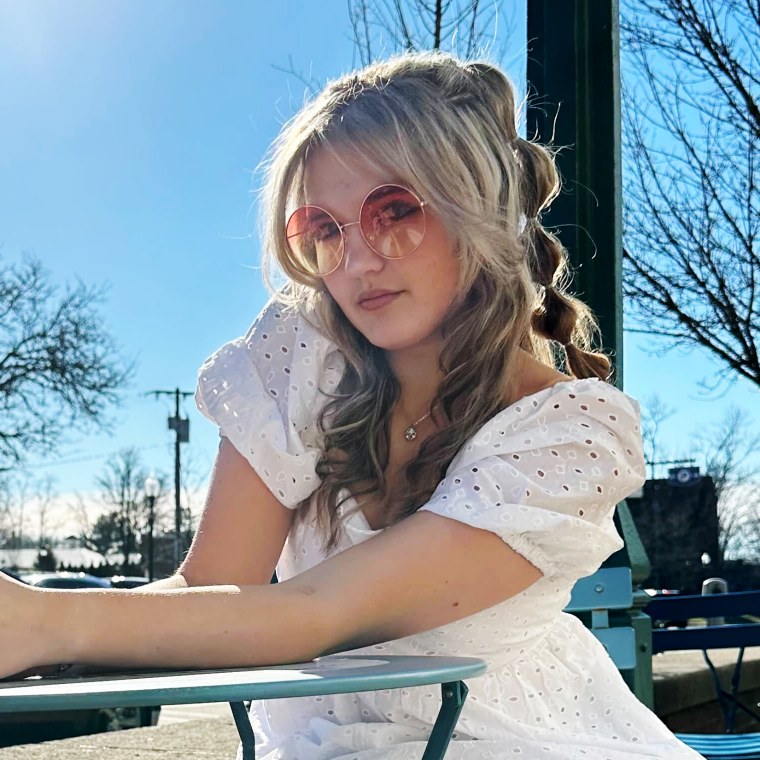Reports of persistent sadness and hopelessness. Declines in overall mental health. A rise in suicidal thoughts. None of these trends, outlined in an alarming Centers for Disease Control and Prevention report about teenagers’ mental health last week, come as a shock to Jacqueline Metzger, a 17-year-old high school senior in Washington, D.C.
“I don’t think I was very surprised at all,” Metzger said. “We’ve been — I wouldn’t say obviously sadder — but I think there’s been more room for us to address that sadness.”
The report, published Feb. 13, was the product of the CDC’s 2021 Youth Risk Behavior Survey, a biennial effort to collect data about high schoolers’ health-related behaviors and experiences. The results, based on responses from more than 17,000 students, showed that well-being is especially poor among teenage girls, 57% of whom reported feeling “persistently sad or hopeless” — a 10-year high.
Much of the conjecture about why girls are experiencing a spike in sadness has come from adults, whose theories include smartphones and social media, as well as anxieties about the world teens will inherit, rife with problems like climate change.
Metzger and eight other teenage girls interviewed across six states generally agreed with those hypotheses, but they said their generation has the confidence to speak up about how they’re feeling and why they think that is — if adults are willing to hear their voices.
It’s just frustrating how we are rarely ever taken seriously when it comes to issues that we care about.
— Marwa Sahak, 16
“Some adults are really open to those kinds of conversations, but most adults sort of make you feel like you’re just another teenager complaining about insignificant issues when ‘there are more important things to worry about,’” Marwa Sahak, a 16-year-old living near California’s central coast, said by text message. “It’s just frustrating how we are rarely ever taken seriously when it comes to issues that we care about.”
The high schoolers pointed to what they see as unique stressors their generation faces, which combined have led to the observed spike in depression. Many named social media, the coronavirus pandemic — which robbed them of normal high school experiences — school shootings and gender discrimination as some of the reasons their cohort feels hopeless. They also said teens are talking more about mental health now than in the past and possibly reducing the stigma, which may lead more of them to feel comfortable reporting it to the CDC.
“Mental health is something I discuss with a lot of my friends. A lot of the people I surround myself with, especially girls … a lot of people are open to talking about their mental health, which could be part of the reason we’re seeing an increase in depression and sadness,” said Emelia Martin, 17, of Lewis Center, Ohio.

Sahak said she thinks girls’ levels of sadness might be more serious than what was reflected in the survey. Teens her age are trapped in a cycle of comparison on social media, she said — viewing themselves relative to friends, celebrities and influencers, which can worsen insecurities and feelings of inadequacy.
As an example, she pointed to a trend on TikTok in which people compare their faces from the side to see whether they have “good profiles.”
“I didn’t even know what a side profile was until TikTok,” Sahak said. “There are other trends and a lot of things on social media that really make people, girls especially, feel insecure about their appearance.”

Life offline can be just as stressful, some teens said.
Several mentioned that they think their bodies are policed at school in a way male students’ bodies aren’t, with girls subjected to dress codes and told their bodies are a distraction to classmates — particularly boys.
“Your body is changing in and of itself at this time, and to add the stressors of society and men putting you into boxes … it isn’t talked about as much as it should be,” said Omalina Wolfe, 18.
Wolfe, who recently started college in Syracuse, New York, added that worrying about someone following you home or commenting on what you wear “hurts young women’s self-esteem, because they feel they’re not in control and they can’t be independent.”
Teens in marginalized groups are experiencing especially high rates of sadness, according to the CDC report. At least 52% of gay, lesbian, bisexual or questioning teenagers reported struggling with mental health. (The survey didn’t ask whether teens were transgender.)
Broken down by race, the data showed that Hispanic and multiracial students were more likely than other groups to report persistent feelings of sadness or hopelessness, while Black students were more likely than Asian, Hispanic or white students to attempt suicide.
“There are different ways to be a teen girl, and all of these different ways come with these intersectional identities that should all be treated with respect,” Metzger said. “A trans teen girl shouldn’t be treated differently or worse than a cis girl. A Black teen girl shouldn’t be treated differently or worse than a white girl.”
Although feelings of sadness among teen girls have trended upward in CDC survey results since 2013, nearly every teenager interviewed said the pandemic played a role in their feelings of despair.
“I’m an extrovert, and so, being isolated, it really threw me off. My depression got a lot worse,” Martin said. “Getting back into the groove of going to in-person school my junior year was a real learning curve. It just made things worse.”
She and many of her friends fell into depressive states during the pandemic that they’re still working to recover from, Martin said.
But many girls also highlighted the support systems they’ve found or built in their lives to help them through low moments. Social media can make them feel less alone, some said, because seeing other teen girls talk about their struggles with mental health can help empower those watching to speak up, too.
“When I see people on my ‘For You’ page talk about that stuff, it’s comforting to know someone is going through it with me,” Martin said.

Others have turned to peer groups. Christina Diep, 18, joined a chapter of the National Alliance on Mental Illness at her high school in Villa Park, California, during her sophomore year and continued to attend meetings virtually during the pandemic.
Diep said that when she was a freshman, talking about her mental health felt taboo. Diep, a first-generation Vietnamese American, said it can be challenging for her and some other children of immigrants to discuss mental health issues at home.
“It was kind of hard to open up to my parents, because they didn’t really understand the gist of mental health,” Diep said.
Diep, who recently graduated, said she’s proud of the club she helped foster, which gives students a space to talk about their emotions, educate one another and spread awareness about broader mental health issues.
“People are more open to sharing their stories” in such groups, Diep said, “and they know out there, someone is struggling — or was struggling — just like you.”
If you or someone you know is in crisis, call 988 to reach the Suicide and Crisis Lifeline. You can also call the network, previously known as the National Suicide Prevention Lifeline, at 800-273-8255, text HOME to 741741 or visit SpeakingOfSuicide.com/resources for additional resources.

